- Wondering how to get Monopoly GO! free rolls? Well, you’ve come to the right place. In this guide, we provide you with a bunch of tips and tricks to get some free rolls for the hit new mobile game. We’ll …
Best Roblox Horror Games to Play Right Now – Updated Weekly
By Adele Wilson
Our Best Roblox Horror Games guide features the scariest and most creative experiences to play right now on the platform!The BEST Roblox Games of The Week – Games You Need To Play!
By Sho Roberts
Our feature shares our pick for the Best Roblox Games of the week! With our feature, we guarantee you'll find something new to play!All Grades in Type Soul – Each Race Explained
By Adele Wilson
Our All Grades in Type Soul guide lists every grade in the game for all races, including how to increase your grade quickly!
Jillian’s Backlog 02: A Journey Through the Games We’ve Missed
Last week was the first entry in my recurring round-up of mobile games that I’ve been meaning to play—and finally got around to. While my backlog is still many hundred titles strong, I’m narrowing down the best of what I …
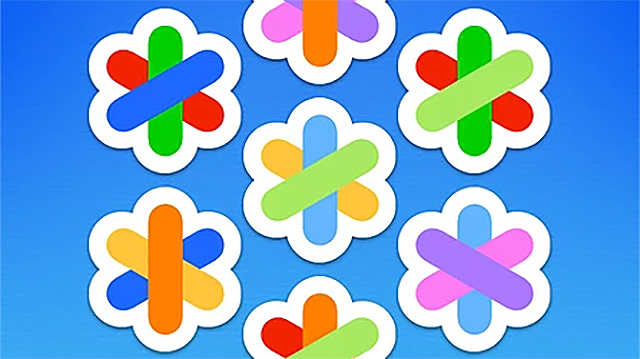
Last week was the first entry in my recurring round-up of mobile games that I’ve been meaning to play—and finally got around to. While my backlog is still many hundred titles strong, I’m narrowing down the best of what I play to five games each week. The only rules for inclusion in this list are that we’ve never reviewed the game here at Gamezebo (or written about it in depth), and that I enjoyed it and think you might, too.
This week’s selection ended up being all puzzle games, although that wasn’t entirely intentional. I just really like the genre, and mobile developers seem to enjoy making great puzzle games. We’ve got a good thing going here.
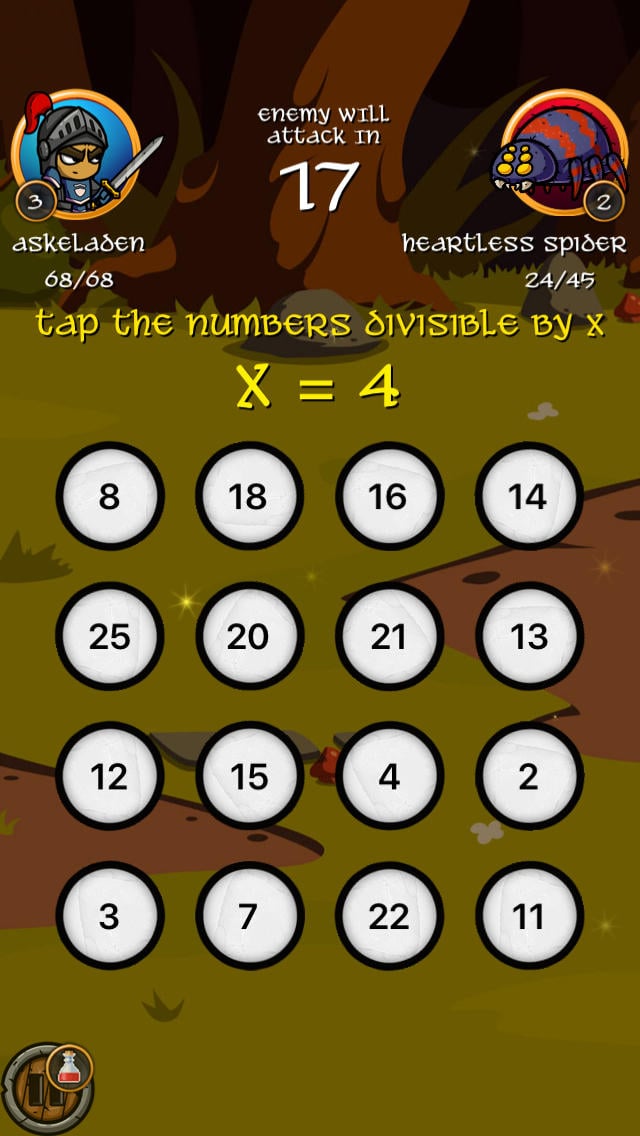
Puzzlewood Quests is an interesting combination of single-serving puzzle micro-games and lite RPG elements. There’s something of a story here, with four different characters and their respective quests to work through, but the focus of the game is on its wave of puzzles that are constantly being thrown at you. Each level places your character in battle against an enemy. However, instead of fighting with swords or spells, you’re attacking with speedy puzzle solving. A handful of different puzzle types will be shown to you at the beginning of the stage. You’ll then be given challenges from each type in quick succession as a timer counts down. When you solve a puzzle, you do damage to the enemy. When the timer runs out, or if you make a mistake, you receive damage. The real joy of the game comes from the wide variety of tests that are thrown at you. You’ll have to solve Sudoku boards, mazes, arithmetic, crosswords, memory challenges, and more. It’s the perfect game to pick up when you want to just dive into a mash-up of puzzles, but still have a sense of progress beyond the standard timer.
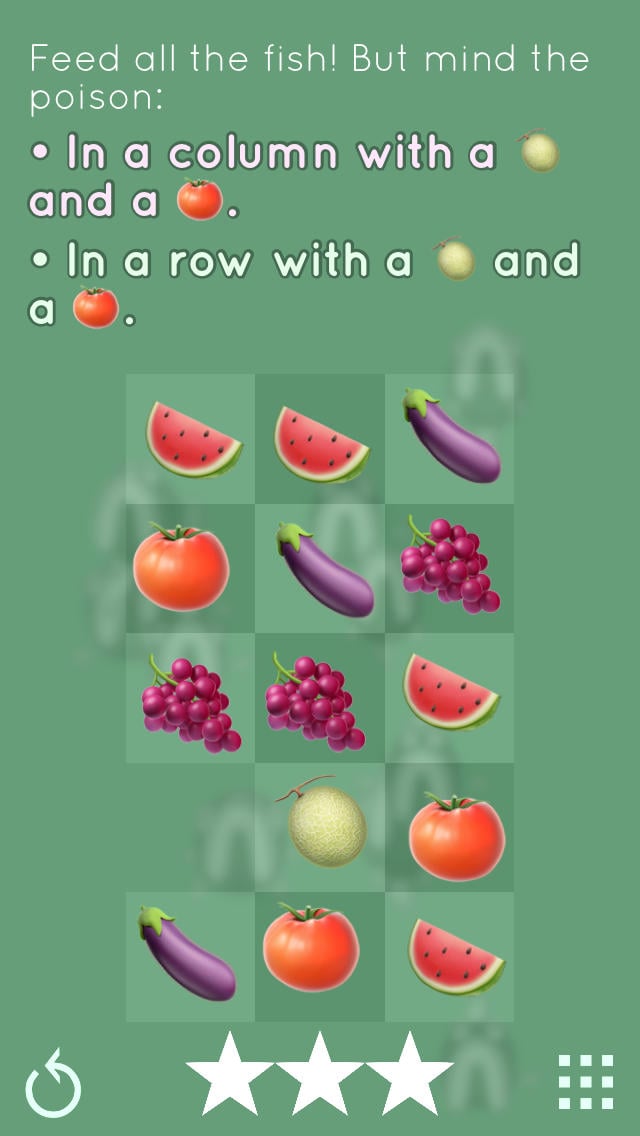
Fishy Food’s place on this list is best understood through another game: Bomb Quest. Bomb Quest, also by developer Games By Mee, is a minesweeper-esque puzzle game that uses text hints instead of numbers as the mine-hunting clues. It uses a simple grid dotted with food icons that are used as markers to describe exactly where the one bomb on each level is located. For example, one level’s clues might tell you “Mind the bomb, 2 steps directly above a candy, not inside a cake.” You then have to check off each safe square using these hints: you know you can touch all the cake squares, for instance. The game is ridiculously simple but this puzzle mechanic is ingenious and so much fun. Bomb Quest was one of the first mobile apps I ever downloaded, and it remains a regularly played fixture of my iPhone to this day: I absolutely adore this game. Unfortunately, it’s no longer available in the App Store and is 32-bit, so its continued existence is precarious at best. Enter: Fishy Food. Fishy Food is essentially the sequel to Bomb Quest. It features slightly easier puzzles—its intended age range is 9-11—but introduces a timer to add a different type of challenge. Instead of avoiding bombs, you’re dodging poisoned food while your fish gobble up everything safe. But the text-based minesweeper mechanic, the increasing difficulty as more tiles and new hint types are introduced, and even the food icons of Bomb Quest are recreated here. Fishy Food is close enough to Bomb Quest that it’s alleviated some of my despair at losing it on iOS 11, although I would gladly play both games into the foreseeable future.
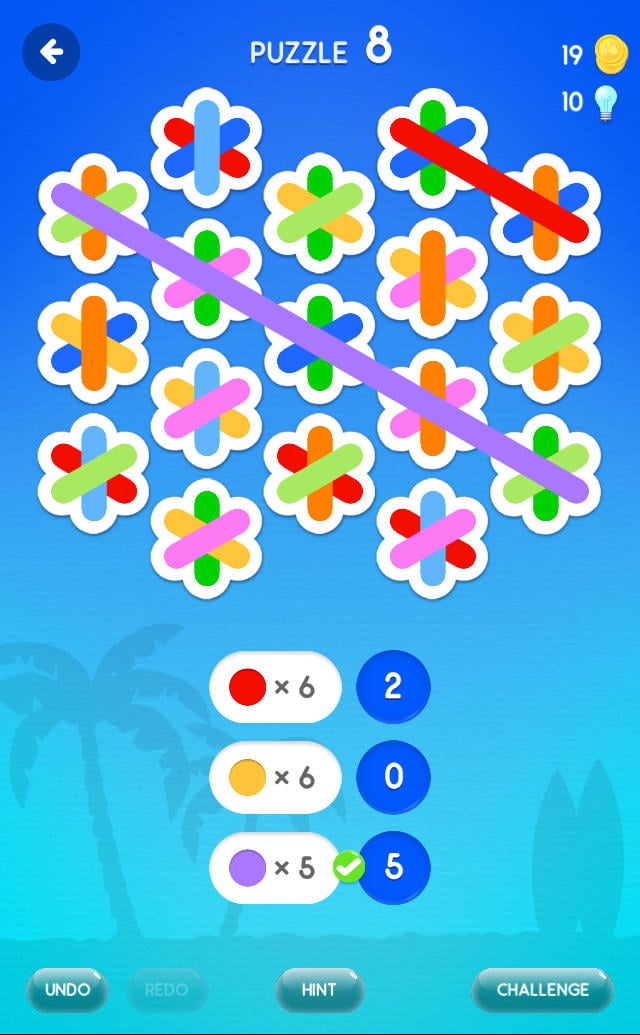
Rainbow Splash might look like a simple match-3 game at first glance, but its colorful hexagonal snowflakes are used in a variety of extremely interesting, and logic-based, puzzle challenges. Each snowflake (which becomes other shapes in later levels) is made up of three different colors in multi-directional lines. Lining up these colors in a row or column will connect them, adding their total to your color tally. In early stages, you’re challenged to collect a certain amount of specific colors: three green, four purple, and five pink, for instance. However, unlike a match-3 game which counts matches as they’re made, Rainbow Splash only tallies your totals once they’ve all been achieved. This means you have to arrange the snowflakes so you have your three green, four purple, etc. in a line at the same time. And since the colors crisscross on single snowflakes, you have to think carefully about placement: you may have all your greens lined up, but one of those greens has a pink coming off it that needs to connect to the other pinks. As you progress through the stages, new types of challenges appear, such as creating lines to match specific patterns or connecting snowflakes with different point values. Every stage in the game also has a challenge mode, doubling the initial 100 stages to 200. On top of the stellar puzzle gameplay, Rainbow Splash is simply lovely to look at and interact with: the colors drip onto the board at the start of each level, swapping snowflakes is done with a quick and fluid motion, and colors spin and click when attaching to form a line. It feels very tangible and makes even the simplest actions rewarding.
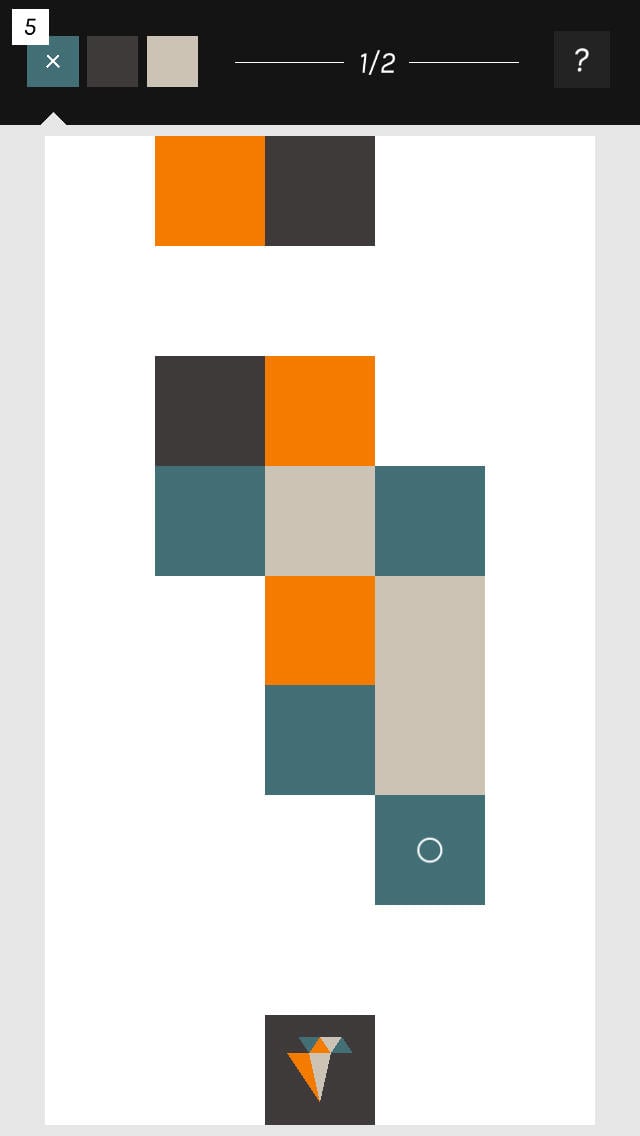
Folt created a bit of a recommendation dilemma for me: it’s a 32-bit app that hasn’t been updated since 2014 and will likely not survive iOS 11. However, it’s still available on the App Store, free to download, and works on the most recent iOS version. It’s also a beautiful, meditative puzzle that’s worth experiencing, even if only for a short while. Folt is a bit like a turn-based Snake combined with Stickets: you start out on a mostly-blank stage and are given a challenge, such as “survive 20 turns, make 30 matches, collect three diamonds.” You then have to unfold your single square of color around the stage, moving one square at a time up, down, left, or right as you attempt to complete that goal. You’re told what the next three colors your square will be in the upper preview bar, and any time three squares of the same color touch, they are removed from the board. The challenge lies in unfolding around the board without trapping yourself, which requires thoughtful pre-planning and a touch of luck. It’s amazing how much challenge the act of expanding from only those four cardinal directions adds to the game: you’re often forced to throw away a square just to turn left or right, leaving a block waiting to ruin your run. But since you can think through each step as long as you like before unfolding, there’s never too much pressure. It’s just you and your colorful, expanding squares.
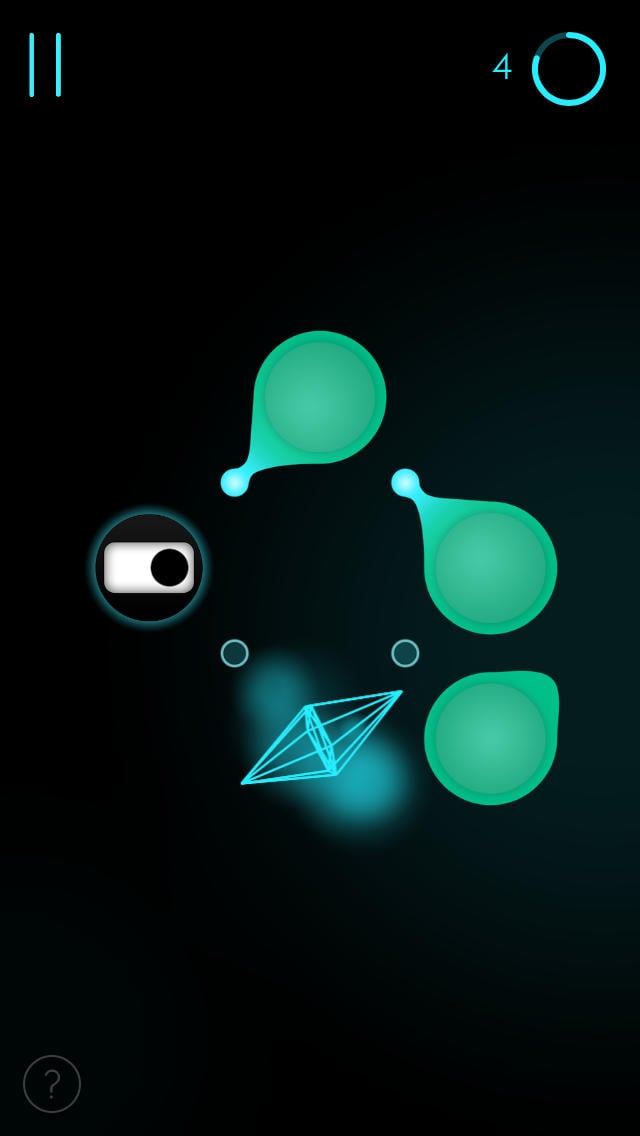
loop : puzzler is a lovely minimalist work that has a good puzzle mechanic accompanied by a great pull. Its gameplay involves rotating energy orbs in order to connect to and move the robot protagonist, Loop, around each level and to the tesseract goal. Each time you touch an orb it will begin rotating counterclockwise, circling around until you let go and taking anything in its orbit along with it. Every tap-and-hold counts as a move, and stages have a limited number of moves to get Loop to his destination. Nodes dotting the stages can be used to hook orbs, allowing you to hopscotch across nodes to reach new areas despite orbs otherwise rotating in place. It’s a clever puzzle challenge that isn’t quite like any other game I’ve played before and which allows for fairly short stages that can both be figured out or solved through trial and error. But the real draw for me is the story that you’re drip-fed as you progress through the game. After every stage you finish, you’ll receive another line of dialogue from Loop, who is both telling you how he ended up in this strange place and asking for your help in escaping it. We learn early on that he is a scouting robot from another planet that was captured by the mysterious Institute upon arriving here, but uncovering his mission and their intentions are your reward for completing each level.
More articles...
Monopoly GO! Free Rolls – Links For Free Dice
By Glen Fox
Wondering how to get Monopoly GO! free rolls? Well, you’ve come to the right place. In this guide, we provide you with a bunch of tips and tricks to get some free rolls for the hit new mobile game. We’ll …Best Roblox Horror Games to Play Right Now – Updated Weekly
By Adele Wilson
Our Best Roblox Horror Games guide features the scariest and most creative experiences to play right now on the platform!The BEST Roblox Games of The Week – Games You Need To Play!
By Sho Roberts
Our feature shares our pick for the Best Roblox Games of the week! With our feature, we guarantee you'll find something new to play!All Grades in Type Soul – Each Race Explained
By Adele Wilson
Our All Grades in Type Soul guide lists every grade in the game for all races, including how to increase your grade quickly!







